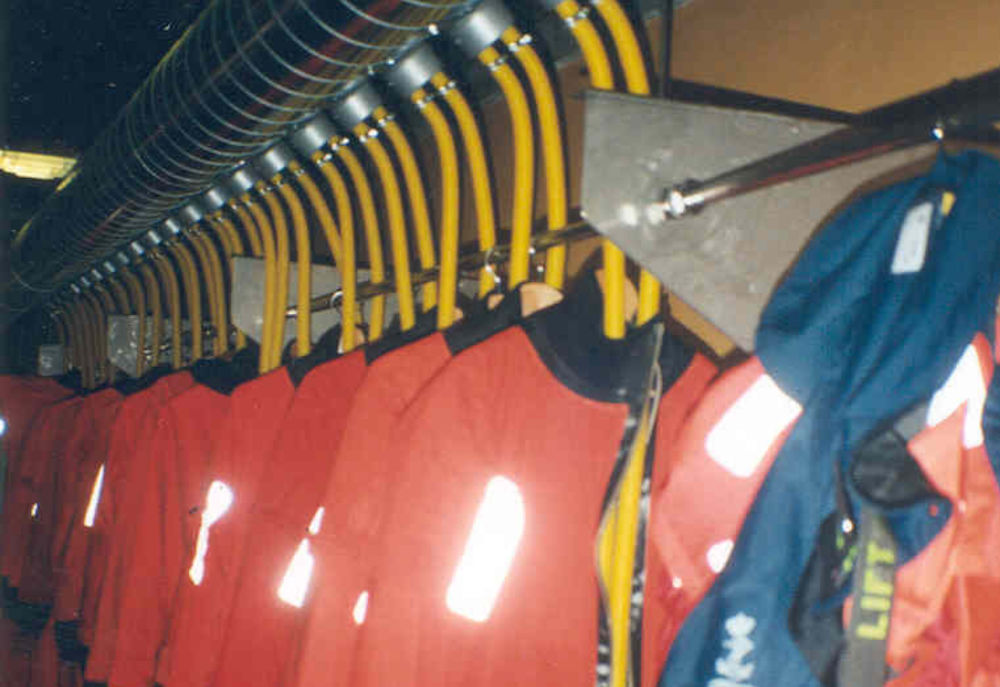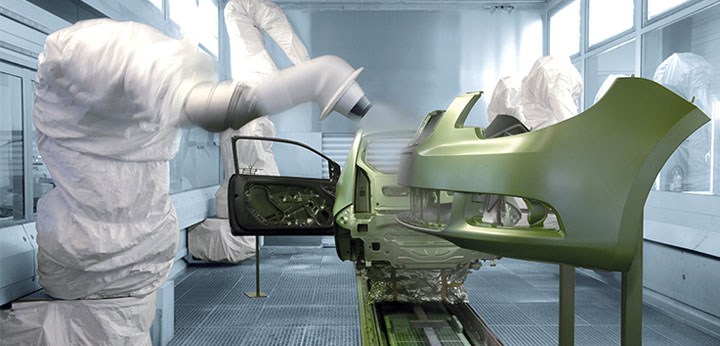
Fast, energy-efficient clothes-drying
Both military and civilian drying rooms can save a lot of money by drying clothes and uniforms by Desiccant Dehumidification.
The Danish Defence Department’s Building Services report “The Optimal Drying Room” (52813/10/okt. 2002) shows that Munters’ drying room concept is the most energy-efficient with the lowest quantity of energy used per litre of water removed.
The traditional drying method using heating is an expensive alternative and also has the disadvantage that in a normal drying room damp is absorbed into the walls and ceiling increasing the risk of mould and mildew growth.
In a desiccant dehumidified room, on the other hand, air humidity is kept at a level at which mould and mildew cannot occur and damp-damage to the building is avoided.
By dehumidifying the drying room, heating can be avoided since Munters’ sorption-dehumidifier also works at high capacity in unheated premises. From an energy-efficient viewpoint, this method is also very expensive. If cooling dehumidification method is used, there will be a high use of energy – particularly with low loads (smaller quantities of clothes).
If condensation-dehumidification is to be efficient, the room must also be heated to above 20oC.
The theory behind clothes-dry
In order to dry clothes, a difference in steam pressure must be created between the drying air and the clothes; the bigger the difference in steam pressure – the shorter the drying time. In desiccant dehumidification, this difference is created by supplying dry air with a very low steam pressure = low water content.
The method creates drying conditions equivalent to a good, dry summer day with light wind, in which the clothing dries outdoors in record time.
With Munters’ drying solution, a desiccant wheel is used instead of wind. This promotes the release of dampness from the cloth to the air, from which the dehumidifier then removes the dampness. This method further shortens the drying time.
When drying using heat air temperature is increased and a high steam pressure is created. This high pressure creates a risk of moisture absorption in the construction of the building. With its low steam pressure, desiccant dehumidification helps to prevent such damage to the building.
Military and civilian areas of us
The Danish military was among the first in Denmark to benefit from dehumidification for the drying of equipment and clothes. The military also has a large drying room where diver’s clothes, rescue clothing etc. is dried in the shortest possible time at the lowest possible cost. The commandos and frogman corps as well as various flying station and fire extinguishing personnel use the Munters’ method in 50-60 military drying rooms.
The solution is also becoming more and more widespread in civilian life where many companies have drying rooms for their employees. This applies not only to police stations etc., where employees change uniforms, but also to employees that cycle to and from work and use changing facilities with well-to ensure fast and efficient drying of cloths and towels.
The solution is also used in housing associations with shared drying rooms. The clothes dry much faster than previously, so that the “changeover” time is shorter and more people can dry clothes. It is also more pleasant to spend time in the drying room as it no longer feels tropical with both high temperatures and humidity. The energy costs are also drastically lower for desiccant dehumidification in comparison with heating.

